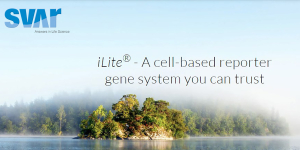Quantification of miRNA and sncRNA
Accurate quantification of miRNA/sncRNA is an important step to to fully exploit the potential of miRNA as a biomarker for many diseases

The incredible regulatory power of microRNAs (miRNAs) and other short non-coding RNA sequences (sncRNA) was discovered very recently. Research into these highly abundant RNAs revealed their crucial involvement in orchestration of all molecular signalling pathways (p53, Wnt, FAS and others) and their potential as a biomarker.
The ability of miRNAs to immediately respond to pathological processes, like tumorigenesis or inflammation, together with their stability in biofluids predetermine them to be specific and sensitive biomarkers for a wide range of diseases. Their proper expression profiling was a challenge for a long time, mostly due to their short length (20–25 nt).
miRNA / sncRNA Quantification Assays
Once you identify your targets, sncRNAs (miRNA, piRNA, snoRNA etc.), it is time to focus closely on their expression. BioVendor and its R&D team of specialists developed quantification assays to measure miRNAs with high specificity, incredible sensitivity and strong robustness. Assays are either ELISA-based (miREIA) or PCR-based (TT-PCR).
All assays exhibit class-leading features and characteristics with specificities for their own.
Two-Tailed RT-qPCR

Patented Two-Tailed RT-qPCR technology with a unique mechanism of RT-primers to provide superior performance with excelent specificity in comparison to other methods. Two-Tailed RT-qPCR is standardized for miRNA and piRNA total quantification.
The challenge detecting small microRNAs is that two conventional PCR primers do not fit the target as their combined length is almost twice the length of the microRNA. Older techniques have solved this by extending the microRNA using e.g., a hairpin primer, adding a poly A-tail, or adding a fragment by ligation. This, however, compromises the assay sensitivity and specificity, as only one of the PCR primers sense the actual microRNA sequence; the other senses the added extension. Further, these methods fail to detect microRNAs modified in the 3’-end as it interferes with the extension process.
The technology has been developed in TATAABiocenter and bought by BioVendor. The miRNA two-Tailed RT-qPCR assays offers a superior solution. Instead of using a single binding probe, Two-tailed PCR uses two hemiprobes, which bind to different stretches of the microRNA, that are connected by a folded tether. While each hemiprobe is too short to bind the microRNA, when both hemiprobes are complementary they bind cooperatively. Binding is exceeding specific, as a mismatch is much more profound in a short hemiprobe. The cDNA formed can then be PCR amplified using two sequence specific primers. SYBR used for detection. High melting resolution analysis can be used for non-specific products detection.
miRNA enzyme immunoassay assay (miREIA )
miREIA is a novel, immunoassay-based method of miRNA quantification which involves hybridization of miRNA isolated from a patient sample to complementary biotinylated DNA oligonucleotide probe. The DNA/RNA hybrids are then captured by a microtiter plate-immobilized monoclonal antibody specific to perfectly matched DNA/miRNA hybrids. Next steps are copying standard ELISA protocols.
The assay can be run on common immunoassay equipment, is compatible with standard clinical workflow, does not require amplification steps and results are obtained in less than three hours including miRNA profiling.
Learn more about this quantification method in this Youtube Video.
09.11.2021

Neural stem cell res...
Growth factors and cytokines from Qkine

Labortops #4
Super Sale: up to 70% off labware

BIOZOL End-Of-Year P...
Up to 30 % discount on selected suppliers

iLite® Cell-Based So...
Reporter gene assays from Svar

Up to 50 % discount
Our current fall offers



